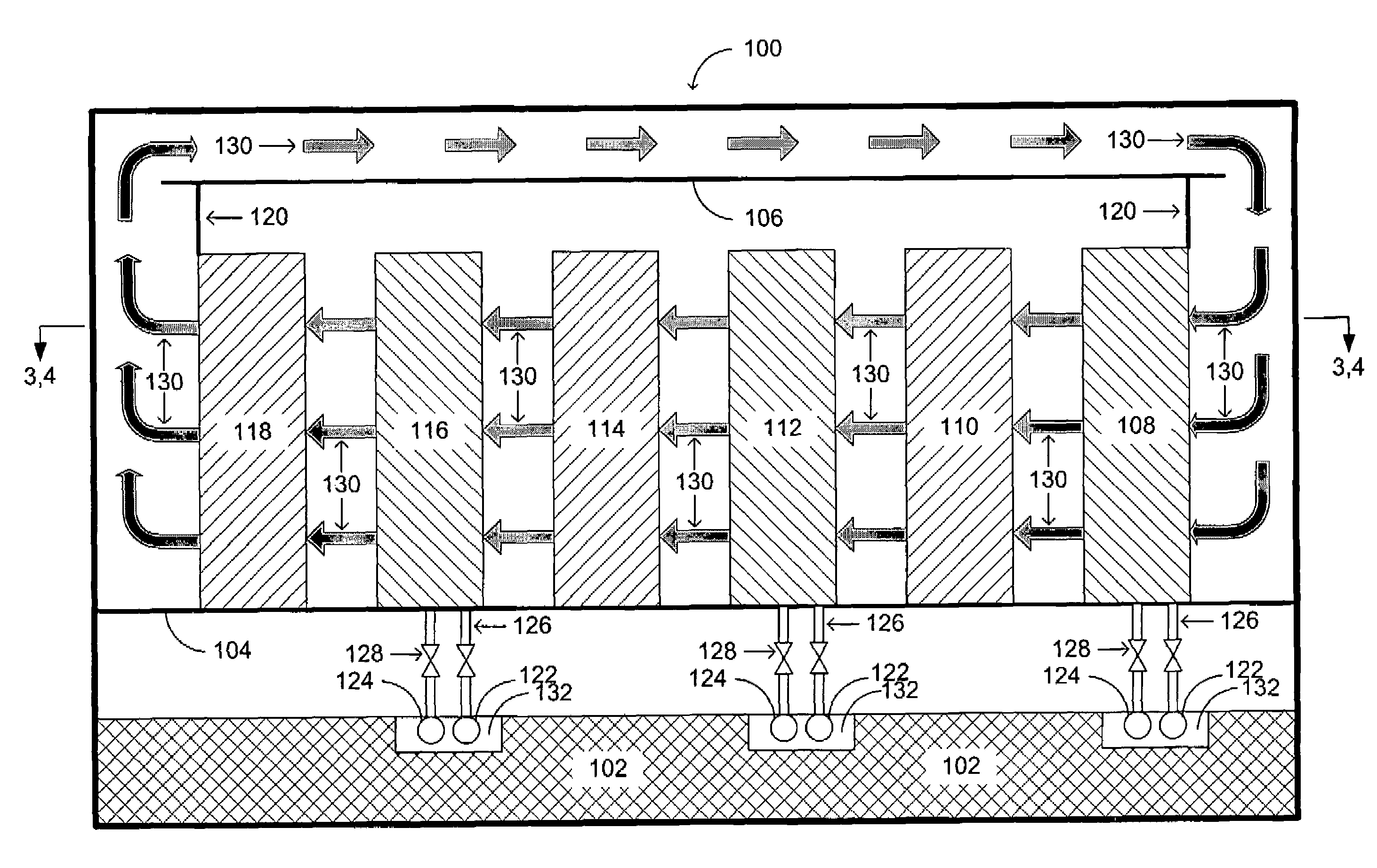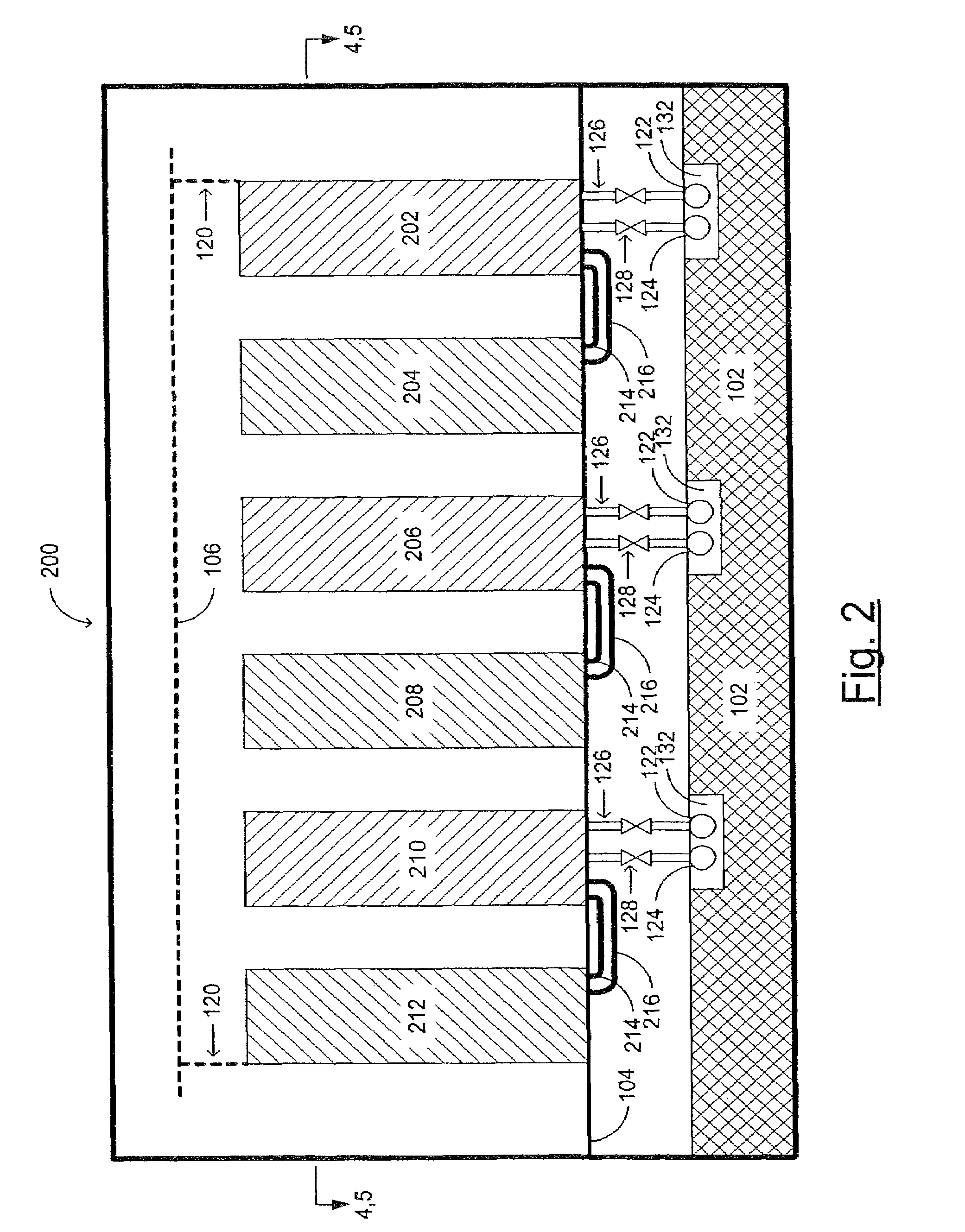Upgradeable, modular data center cooling apparatus
a data center and modular technology, applied in the field of computer data centers, can solve the problems and increasing the power density of the systems in the center, so as to achieve the effect of reducing the efficiency of air-cooling systems
- Summary
- Abstract
- Description
- Claims
- Application Information
AI Technical Summary
Benefits of technology
Problems solved by technology
Method used
Image
Examples
Embodiment Construction
[0018]FIG. 1 is a side view of a data center including alternating air-cooled racks and 15 air conditioners according to the present invention. In this example embodiment of the present invention, a data center comprising a room 100 is built including a raised floor 104 and a foundation 102. Optionally, the room may include a false ceiling 106 for separation of the return airflow. Within the room 100 are a first air conditioning unit 108, a first rack 110, a second air conditioning unit 112, a second rack 114, a 20 third air conditioning unit 116, and a third rack 118. Note that in a typical data center each of these servers and air conditioning units are actually a single unit within a column of units. For example, the first rack 110 represented in this illustration may be a single server within a column of racks. See FIG. 3 for a top view of such a data center including three columns of racks and three columns of air conditioning units, one row of which is shown in FIG. 1. Airflow...
PUM
 Login to View More
Login to View More Abstract
Description
Claims
Application Information
 Login to View More
Login to View More - R&D
- Intellectual Property
- Life Sciences
- Materials
- Tech Scout
- Unparalleled Data Quality
- Higher Quality Content
- 60% Fewer Hallucinations
Browse by: Latest US Patents, China's latest patents, Technical Efficacy Thesaurus, Application Domain, Technology Topic, Popular Technical Reports.
© 2025 PatSnap. All rights reserved.Legal|Privacy policy|Modern Slavery Act Transparency Statement|Sitemap|About US| Contact US: help@patsnap.com



